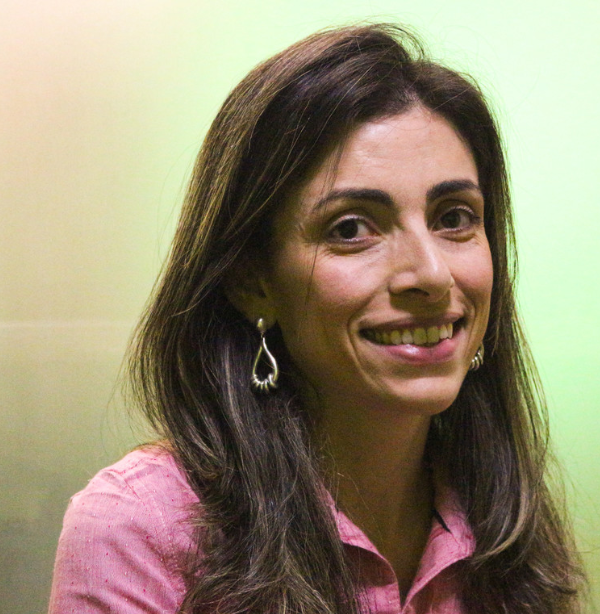
Cristina Nader Vasconcelos
I am currently a Research Software Engineer at Google Brain group in Montreal. I’m interested in applications of deep learning to computer vision, reinforcement learning, meta-learning, speech and natural language processing. I have a PhD in Computer Graphics from PUC-Rio, Brazil. Previously, I was Associate Professor at the Universidade Federal Fluminense (UFF).
Research Areas
Authored Publications
Sort By
What Secrets Do Your Manifolds Hold? Understanding the Local Geometry of Generative Models
Ibtihel Amara
Golnoosh Farnadi
Mohammad Havaei
ICLR 2025
Preview abstract
Deep Generative Models are frequently used to learn continuous representations of complex data distributions by training on a finite number of samples. For any generative model, including pre-trained foundation models with Diffusion or Transformer architectures, generation performance can significantly vary across the learned data manifold. In this paper, we study the local geometry of the learned manifold and its relationship to generation outcomes for a wide range of generative models, including DDPM, Diffusion Transformer (DiT), and Stable Diffusion 1.4. Building on the theory of continuous piecewise-linear (CPWL) generators, we characterize the local geometry in terms of three geometric descriptors - scaling (ψ), rank (ν), and complexity/un-smoothness (δ). We provide quantitative and qualitative evidence showing that for a given latent vector, the local descriptors are indicative of post-generation aesthetics, generation diversity, and memorization by the generative model. Finally, we demonstrate that by training a reward model on the local scaling for Stable Diffusion, we can self-improve both generation aesthetics and diversity using geometry sensitive guidance during denoising.
View details
Scaling Vision Transformers to 22 Billion Parameters
Josip Djolonga
Basil Mustafa
Piotr Padlewski
Justin Gilmer
Mathilde Caron
Rodolphe Jenatton
Lucas Beyer
Michael Tschannen
Anurag Arnab
Carlos Riquelme
Matthias Minderer
Gamaleldin Elsayed
Fisher Yu
Avital Oliver
Fantine Huot
Mark Collier
Vighnesh Birodkar
Yi Tay
Alexander Kolesnikov
Filip Pavetić
Dustin Tran
Thomas Kipf
Xiaohua Zhai
Daniel Keysers
Neil Houlsby
Arxiv (2023)
Preview abstract
The scaling of Transformers has driven breakthrough capabilities for language models.
At present, the largest large language models (LLMs) contain upwards of 100B parameters.
Vision Transformers (ViT) have introduced the same architecture to image and video modeling, but these have not yet been successfully scaled to nearly the same degree; the largest dense ViT contains 4B parameters. We present a recipe for highly efficient training of a 22B-parameter ViT and perform a wide variety of experiments on the resulting model. When evaluated on downstream tasks (often with a lightweight linear model on frozen features) ViT22B demonstrates increasing performance with scale. We further observe other interesting benefits of scale, including an improved tradeoff between bias and performance, an improved alignment to human visual perception in terms of shape/texture bias, and improved robustness. ViT22B demonstrates the potential for "LLM-like'' scaling in vision, and provides key steps towards getting there.
View details
Proper Reuse of Image Classification Features Improves Object Detection
Vighnesh Nandan Birodkar
Proceedings of the IEEE/CVF Conference on Computer Vision and Pattern Recognition, CVPR (2022), pp. 13628-13637
Preview abstract
A largely accepted practice in transfer learning is to pre-train a model on a data-abundant upstream task and using the pre-trained weights for model initialization on the downstream task. Specifically, in Object Detection (OD) it is common to initialize the feature backbone with pre-trained ImageNet classifier weights and fine-tune those weights along with the other detection model parameters.
Recent work has shown that this practice is not strictly necessary and that it is possible to train an object detector from scratch by training for much longer.
In this work we investigate the opposite end of the training spectrum and keep the feature backbone frozen during object detection training, preserving the classifier initialization. Contrary to the common belief that object detectors benefit from end-to-end training, we conjecture that the weight initialization obtained from training on a classifier contains useful knowledge that is forgotten by fine-tuning or avoided entirely when training from scratch, with negative consequences for long-tail classes. As an immediate contribution of our findings, we show that it is possible to train an off-the-shelf object detection model with similar if not superior performance while significantly reducing the need for computational resources, both memory-wise and computationally-wise (FLOPs).
The performance benefits of the proposed upstream task knowledge preservation is even more clear when stratifying results by classes and number of annotations available. Our results on MSCOCO, LVIS and Pascal VOC show that our extreme formulation of model reuse has a clear positive impact on full-shot object detection and also on typical hard cases, such as classes with low number of annotations---such as those found in long tail object recognition and few-shot learning.
View details
Impact of Aliasing on Generalization in Deep Convolutional Networks
Hugo Larochelle
Nicolas Le Roux
Rob Romijnders
International Conference on Computer Vision ICCV 2021, IEEE/CVF (2021)
Preview abstract
Traditionally image pre-processing in the frequency domain has played a vital role in computer vision and was even part of the standard pipeline in the early days of Deep Learning. However, with the advent of large datasets many practitioners concluded that this was unnecessary due to the belief that these priors can be learned from the data itself \emph{if they aid in achieving stronger performance}. Frequency aliasing is a phenomena that may occur when down-sampling (sub-sampling) any signal, such as an image or feature map. We demonstrate that substantial improvements on OOD generalization can be obtained by mitigating the effects of aliasing by placing non-trainable blur filters and using smooth activation functions at key locations in the ResNet family of architectures -- helping to achieve new state-of-the-art results on two benchmarks without any hyper-parameter sweeps.
View details
